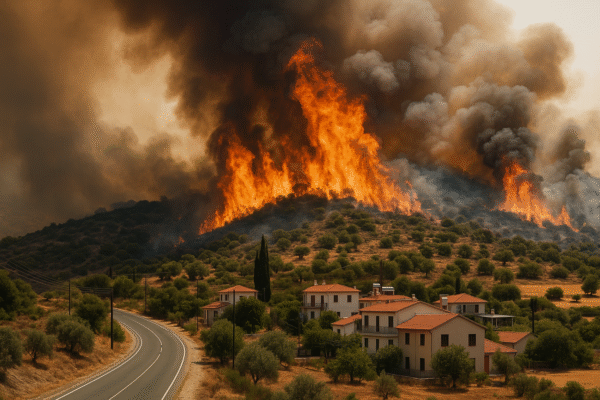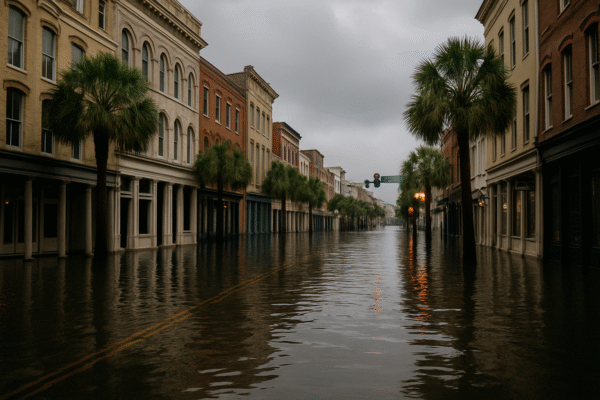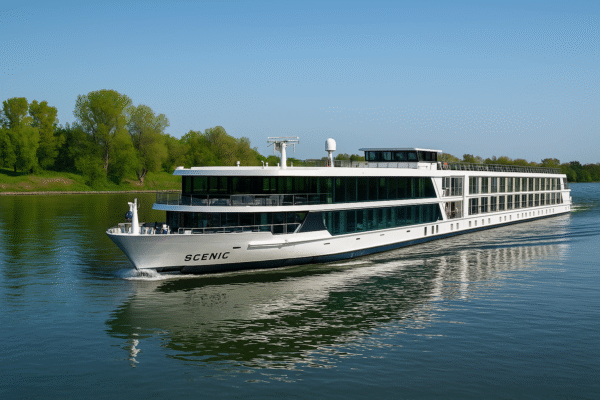Beginning August 2025, visitors to Charleston, one of America’s most charming and historic coastal cities, will notice a significant change in how local authorities communicate weather-related dangers. In a proactive move to improve public safety, the National Weather Service (NWS) Charleston office is implementing a revised flood alert system. The upgrade will result in a higher number of Flash Flood Warnings being issued, even during moderate flooding events that previously triggered only Flood Advisories.
The decision comes as part of a broader national effort by the National Oceanic and Atmospheric Administration (NOAA) to improve the clarity and urgency of flood communications, particularly in vulnerable regions like the Lowcountry. Charleston has experienced a more than 400% increase in flooding incidents over the last 30 years, largely due to rising sea levels, frequent storms, and inadequate drainage in historic areas.
Why Charleston Is Making This Change
Flooding is the deadliest weather hazard in the United States, accounting for over 120 deaths annually, according to NOAA. Alarmingly, nearly half of these fatalities involve motorists who misjudge floodwaters on roadways.
In a city like Charleston—where cobblestone streets, historic districts, and waterfront neighborhoods frequently encounter flooding—the need for clearer, faster alerts is critical. Under the updated system, flood events that previously caused mere inconvenience will now be treated with greater urgency, helping both residents and tourists make safer decisions.
In 2024, Charleston issued 95 Flood Advisories but only 19 Flash Flood Warnings. This ratio is expected to reverse significantly under the new criteria.
What Tourists Can Expect This Year
Tourists visiting popular Charleston districts like King Street, the French Quarter, and the City Market will see more flash flood warnings, particularly after periods of heavy rain. However, this shift doesn’t mean the flood risk has worsened—it simply reflects improved communication about the severity of existing hazards.
For example, what was previously categorized as a mild nuisance flood during afternoon thunderstorms may now trigger an official Flash Flood Warning, prompting immediate public awareness. This change will help tourists adjust travel plans, avoid affected areas, and stay safe while enjoying the city’s many attractions.
Tidal Flooding Will Still Be Managed Separately
It’s important for visitors to note that tidal flooding, common in Folly Beach, Sullivan’s Island, Isle of Palms, and the Battery promenade, will not fall under this new warning system. These events—often predictable and linked to astronomical tides—will continue to be managed via Coastal Flood Warnings or Storm Surge Warnings during hurricanes or tropical storms.
This distinction helps travelers better understand which events pose immediate danger versus those that require more general caution.
How Will This Impact Tourism and Travel?
Charleston remains a safe, welcoming destination, and the updated alert system only enhances that status by ensuring tourists are better informed. During heavy rains or flash flood warnings, there may be short-term disruptions to dining reservations, museum visits, walking tours, or airport transfers. However, these minor inconveniences are outweighed by the increased situational awareness for all travelers.
Local businesses, including hotels, B&Bs, and tour operators, can use these alerts to proactively inform guests, reroute services, or arrange transportation more safely. This collaborative approach between the public and private sectors can improve Charleston’s reputation as a resilient and visitor-conscious destination.
Tips for Travelers in Charleston During Flood Season
To make the most of your Lowcountry experience, tourists are advised to take the following precautions:
- Check Weather Regularly: Follow the Charleston NWS Office, NOAA, and local news outlets for the latest weather forecasts.
- Avoid Flooded Areas: Never walk or drive through standing water. Even shallow flooding can lead to vehicle stalls or injury.
- Choose Lodging on Higher Ground: Consider accommodations in areas with elevated infrastructure or parking, especially during hurricane season (June–November).
- Ask for Local Advice: Hotel staff, concierges, and tourism information centers can provide real-time updates on closures or alternative routes.
Could This Set a National Precedent?
While Charleston is currently the only East Coast city implementing these changes, other flood-prone urban areas such as New Orleans, Savannah, and Miami may follow suit in the future. According to NOAA, this update has been in the works for over a year and is not directly tied to any specific flood event. It reflects a growing nationwide awareness of climate resilience and the importance of real-time public safety tools in the tourism sector.
Final Word for Visitors
Despite the uptick in flash flood warnings, Charleston remains a top-tier U.S. travel destination, celebrated for its Southern hospitality, antebellum architecture, and vibrant food scene. These enhanced alerts are not meant to alarm but to empower tourists with timely, actionable information that allows for safe and enjoyable exploration.
So, whether you’re planning a romantic carriage ride through downtown, a historical walking tour, or a beach day along the coast, rest assured—Charleston is ready to welcome you safely through every tide and storm.
For more travel news like this, keep reading Global Travel Wire






















